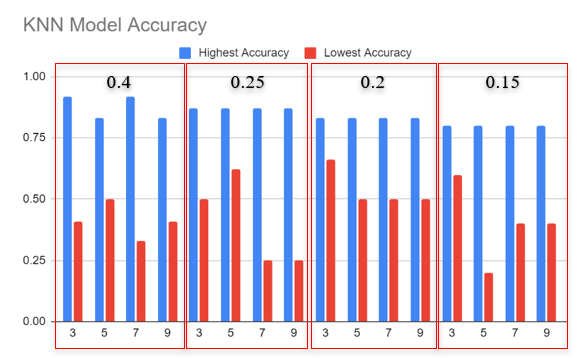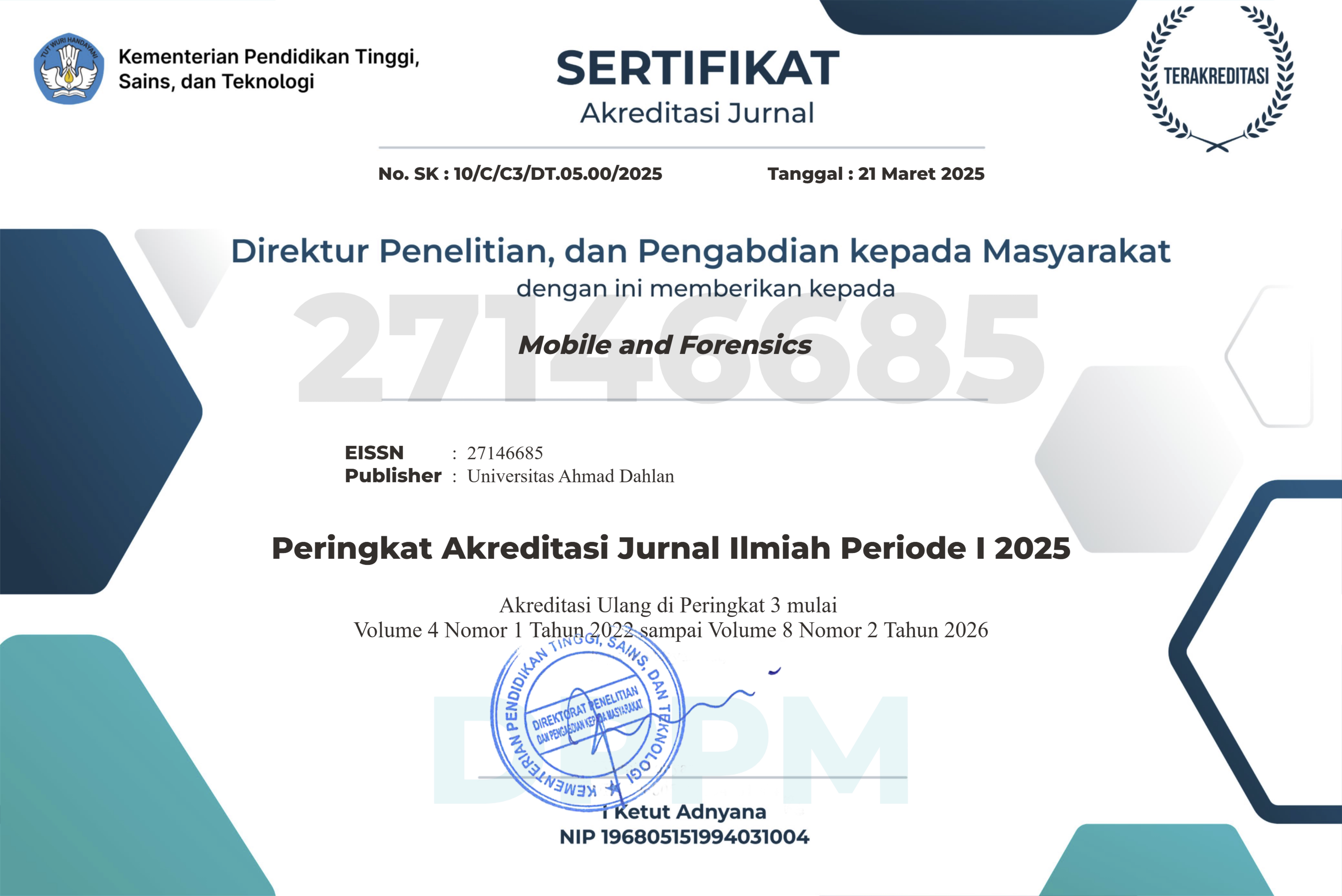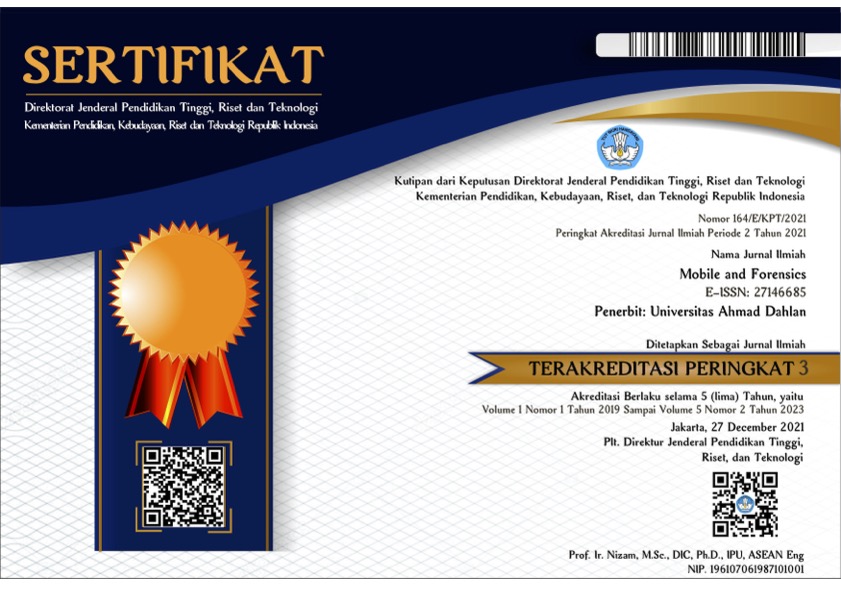EEG Classification for Brain Response Analysis through University Website Interface in Yogyakarta Using Naive Bayes and KNN
DOI:
https://doi.org/10.12928/mf.v6i1.9056Keywords:
EEG, KNN, Naive Bayes, User Interface, University WebsiteAbstract
One of the challenges high school students face is the abundant availability of information about various campuses through different media, making it difficult to accurately predict their interest in a particular campus. Electroencephalogram (EEG) technology can read human brain activity, such as when students access information on a campus website. The Naive Bayes and K-Nearest Neighbor (KNN) methods can be employed to predict student interest in a campus based on EEG signals recorded while they browse the official campus website. Naive Bayes is known for achieving high accuracy with small datasets, whereas KNN excels at classifying noisy data. These two methods offer variables that can be directly compared. Classification using Naive Bayes and KNN achieved the highest accuracy score of 92%. The most appropriate algorithm is determined by evaluating performance using a confusion matrix. In this case study, Naive Bayes slightly outperformed KNN, as evidenced by precision, recall, and f1-score matrices. The Naive Bayes method resulted in an F1-score of 94%, compared to KNN’s 92%.
References
K. N. L. Mastra and R. F. Dharmawan, “Tinjauan User Interface Design Pada Website E-Commerce Laku6,” Narada, vol. 5, no. 1, pp. 83–94, 2018.
“Peran Guru BK Dalam Membantu Siswa Menentukan Pilihan Jurusan dan Kampus.” https://www.quipper.com/id/blog/quipper-campus/campus-life/peran-guru-bk/ (accessed Sep. 01, 2023).
H. Sanggarini, R. Purnamasari, and S. Hadiyoso, “Klasifikasi Efek Familiarity Pada Sinyal EEG Manusia Menggunakan Metode Hjorth Descriptor,” vol. 6, no. 1, pp. 826–833, 2019.
I. Budiman and R. Ramadina, “Penerapan Fungsi Data Mining Klasifikasi untuk Prediksi Masa Studi Mahasiswa Tepat Waktu pada Sistem Informasi Akademik Perguruan Tinggi,” Ijccs, vol. x, No.x, no. 1, pp. 1–5, 2015.
D. P. Utomo and M. Mesran, “Analisis Komparasi Metode Klasifikasi Data Mining dan Reduksi Atribut Pada Data Set Penyakit Jantung,” J. Media Inform. Budidarma, vol. 4, no. 2, p. 437, 2020, doi: 10.30865/mib.v4i2.2080.
M. A. R. Hatmadiansyah, J. Raharjo, and ..., “Klasifikasi Sinyal Alpha Beta Terhadap Konsentrasi Diri Dalam Kondisi Mengerjakan Tes Matematikamenggunakan Metode K-nearest Neighbor (k-nn),” eProceedings …, vol. 8, no. 5, pp. 5090–5099, 2021, [Online]. Available: https://openlibrarypublications.telkomuniversity.ac.id/index.php/engineering/article/view/15838
M. A. Mawalid, “Klasifikasi Sinyal EEG untuk Mendeteksi Cybersickness melalui Time Domain Feature Extraction menggunakan Naive Bayes,” 2019, [Online]. Available: https://repository.its.ac.id/60952/1/07111550052005-Master_Thesis.pdf
H. J. Yoon and S. Y. Chung, “EEG-based emotion estimation using Bayesian weighted-log-posterior function and perceptron convergence algorithm,” Comput. Biol. Med., vol. 43, no. 12, pp. 2230–2237, 2013, doi: 10.1016/j.compbiomed.2013.10.017.
R. N. Devita, H. W. Herwanto, and A. P. Wibawa, “Perbandingan Kinerja Metode Naive Bayes dan K-Nearest Neighbor untuk Klasifikasi Artikel Berbahasa indonesia,” J. Teknol. Inf. dan Ilmu Komput., vol. 5, no. 4, p. 427, 2018, doi: 10.25126/jtiik.201854773.
Dessy Kusumaningrum and E. M. Imah, “Studi Komparasi Algoritma Klasifikasi Mental Workload Berdasarkan Sinyal EEG,” J. Sist. Cerdas, vol. 3, no. 2, pp. 133–143, 2020, doi: 10.37396/jsc.v3i2.69.
S. K. Ilmiyati, “Analisis Pengolahan Data Sinyal EEG Pada Penderita Gangguan Tidur Menggunakan Metode Support Vector Machine Dan Naive Bayes,” Pros. Semin. Nas. Mhs. …, pp. 601–615, 2019, [Online]. Available: https://prosiding.unimus.ac.id/index.php/mahasiswa/article/view/517%0Ahttps://prosiding.unimus.ac.id/index.php/mahasiswa/article/viewFile/517/520
G. A. Pamiela and A. Azhari, “Deep Learning on EEG Study Concentration in Pendemic,” Inform. Mulawarman J. Ilm. Ilmu Komput., vol. 16, no. 2, p. 111, 2021, doi: 10.30872/jim.v16i2.6474.
K. L. Tsui, V. Chen, W. Jiang, F. Yang, and C. Kan, “Data Mining Methods and Applications,” Springer Handbooks, pp. 797–816, 2023, doi: 10.1007/978-1-4471-7503-2_38.
I. Herdayanti, I. Wijayanto, and ..., “Klasifikasi Sinyal Eeg Saat Mendengarkan Musik Rock Dan Musik Klasik Dengan Metode Transformasi Wavelet,” eProceedings …, vol. 6, no. 2, pp. 4194–4201, 2019, [Online]. Available: https://openlibrarypublications.telkomuniversity.ac.id/index.php/engineering/article/view/10645%0Ahttps://openlibrarypublications.telkomuniversity.ac.id/index.php/engineering/article/download/10645/10503
K. N. Oktaviani et al., “Identifikasi Neuropsikologi Emosi terhadap Video Iklan menggunakan Fast Fourier Transform dan Backpropagation Levenberg-Marquardt,” Semin. Nas. Apl. Teknol. Inf., pp. 11–2018, 2018.
R. V. B. Vangara*, K. Thirupathur, and S. P. Vangara, “Opinion Mining Classification u sing Naive Bayes Algorithm,” Int. J. Innov. Technol. Explor. Eng., vol. 9, no. 5, pp. 495–498, 2020, doi: 10.35940/ijitee.e2402.039520.

Downloads
Published
Issue
Section
License
Copyright (c) 2024 Faiq Suhail, Ahmad Azhari

This work is licensed under a Creative Commons Attribution-ShareAlike 4.0 International License.
Start from 2019 issues, authors who publish with JURNAL MOBILE AND FORENSICS agree to the following terms:
- Authors retain copyright and grant the journal right of first publication with the work simultaneously licensed under a Creative Commons Attribution License (CC BY-SA 4.0) that allows others to share the work with an acknowledgment of the work's authorship and initial publication in this journal.
- Authors are able to enter into separate, additional contractual arrangements for the non-exclusive distribution of the journal's published version of the work (e.g., post it to an institutional repository or publish it in a book), with an acknowledgment of its initial publication in this journal.
- Authors are permitted and encouraged to post their work online (e.g., in institutional repositories or on their website) prior to and during the submission process, as it can lead to productive exchanges, as well as earlier and greater citation of published work.

This work is licensed under a Creative Commons Attribution-ShareAlike 4.0 International License.












 Mobile and Forensics (MF)
Mobile and Forensics (MF)